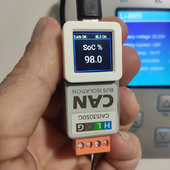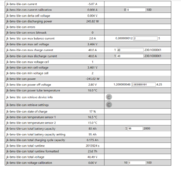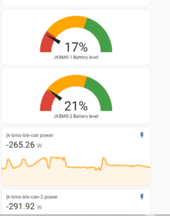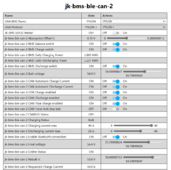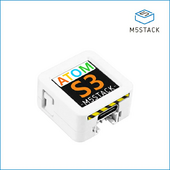chaosnature
New Member
- Joined
- Sep 15, 2022
- Messages
- 513
Offset - that is one topic i dont yet understandI have a setup worse than yours where my inverter does NOT talk to ANY battery.
Just working in Float/Absorbtion/Equalization on Inverter level and set maximum charge/discharge current there.
Also, when you do NOT have a load (check each battery 1 by 1), check the no-load voltage of each battery.
As you can see in my plots, I have approx 0.7V voltage measument "offset" / error on the second battery that's currently hitting OVP. At first it was a diode in the loop, but probably just some voltage that needs calibration in the JK BMS App.
That could be something else to check if you can read very similar voltages, yet the load voltages / capacities seem quite different (you might have the OPPOSITE problem as I have basically).
Here are m=y current settings again
# Operating Voltage
46v (3.28) to 57v (4.07)
# JK-Can
Absorbtion Voltage
Absorbtion Offset - 0.05
Absorbtion Time - 42 mins
Bulk Voltage - 55.7
Rebulk Offset - 0.8
Float Voltage - 54.1 change to 55.9
Discharge Current - 40 A
Charge Current - 40 A
Total Battery Capacity - was 80Ah - New 95 Ah
SOC 100% 4.1
SOC 0% 3.25 NEW 3.34
UVP 3.33
# JK-Can-2
Absorbtion Voltage
Absorbtion Offset - 0.15
Absorbtion Time - 42 mins
Bulk Voltage - 56.4
ReBulk Voltage - 53.6
Rebulk Offset - 0.8
Float Voltage - 56.4
Discharge Current - 28 A
Charge Current - 40 A
Total Battery Capacity - 95 Ah
SOC 100% 4.0
SOC 0% 3.25 NEW 3.34
UVP 3.33



